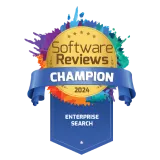
In the relentless pursuit of exceptional customer experiences, decision-makers like you are under constant pressure to optimize operations and drive growth.
The promise of LLM-powered agent desktops offers a compelling solution, but the path to realization is fraught with complexities.
A critical challenge lies in viewing agent desktops and augmentation tools as isolated components rather than a unified ecosystem. To truly maximize the value of AI in support, these elements must work seamlessly together.
This blog cuts through the noise to provide actionable insights into the complexities of building or buying an LLM agent desktop.
The Complexities of Building an LLM Agent Desktop
Building an LLM agent desktop from the ground up is a daunting undertaking, fraught with challenges that can significantly impact timelines, budgets, and outcomes.
Let’s delve into some of its key complexities:
Data Privacy and Security Concerns
Customer data is sacrosanct.
Building an LLM agent desktop necessitates robust data protection measures. Organizations must grapple with:
- Compliance with stringent regulations: Adhering to GDPR, CCPA, and industry-specific standards.
- Data anonymization and encryption: Safeguarding sensitive customer information.
- Preventing data breaches: Implementing state-of-the-art data security protocols.
Talent Acquisition and Retention Challenges
Developing an LLM agent desktop requires a specialized skill set. Organizations face the challenge of:
- Finding AI experts: Identifying and hiring data scientists, machine learning engineers, and NLP specialists.
- Building a strong AI team: Assembling a cohesive team with complementary expertise.
- Retaining top talent: Offering competitive compensation and fostering a culture of innovation.
Infrastructure and Technology Requirements
A robust infrastructure is essential for training and deploying LLM agent desktops. Key considerations include:
- High-performance computing resources: Meeting the demanding computational requirements.
- Scalability: Ensuring the platform can handle increasing workloads.
- Data storage and management: Efficiently handling large volumes of data.
- Cloud vs. on-premises: Evaluating the best deployment model for specific needs.
Model Development and Training Complexities
Creating an effective LLM model is a complex process involving:
- Data quality and quantity: Ensuring high-quality training data.
- Model architecture selection: Choosing the right foundation for the model.
- Hyperparameter tuning: Optimizing model performance.
- Continuous training and improvement: Adapting the model to evolving needs.
Integration with Existing Systems
Integrating the LLM agent desktop into the existing support ecosystem is crucial. Challenges include:
- Compatibility issues: Ensuring seamless integration with CRM, ticketing, and knowledge base systems.
- Data synchronization: Maintaining data consistency across platforms.
- API development: Creating interfaces for communication between systems.
The Uncertainties of Buying an LLM Agent Desktop
While purchasing a pre-built LLM agent desktop can offer a quicker path to implementation, it’s essential to weigh the potential drawbacks carefully.
Vendor Lock-In Concerns
Reliance on a third-party vendor for a critical component of your support operations can lead to vendor lock-in. Key considerations include:
- Dependency on vendor roadmap: Aligning your long-term support strategy with the vendor’s product development plans.
- Limited flexibility: Difficulty adapting to evolving business needs or industry changes.
- High switching costs: Potential challenges and expenses associated with changing vendors.
Customization Limitations
Pre-built LLM agent desktops often come with predefined functionalities, limiting your ability to tailor the solution to your specific needs. This can impact:
- Agent workflows: Adapting the desktop to match your agents’ processes and preferences.
- Customer interactions: Delivering a consistent and personalized customer experience.
- Integration with existing tools: Seamlessly incorporating your existing support technology stack.
Data Ownership and Control Issues
When using a third-party LLM agent desktop, questions arise about data ownership and control. Key concerns include:
- Data privacy and security: Ensuring the vendor’s data handling practices meet your compliance standards.
- Intellectual property: Protecting your organization’s proprietary information and customer data.
- Data accessibility: Maintaining control over your data for analysis and insights.
Potential for Hidden Costs
Beyond the initial purchase price, additional costs may arise when implementing and maintaining an LLM agent desktop. These can include:
- Implementation and customization fees: Adapting the desktop to your environment and workflows.
- Ongoing maintenance and support costs: Ensuring the desktop functions optimally.
- Additional modules or features: Expanding the desktop’s capabilities at extra expense.
Evaluating Solution Fit for Specific Business Needs
Selecting the right LLM agent desktop requires a thorough evaluation of your organization’s unique requirements. Key factors to consider include:
- Functionality and features: Ensuring the desktop aligns with your support goals and objectives.
- Scalability: Accommodating growth in support volume and agent teams.
- Integration capabilities: Compatibility with your existing CRM, ticketing, and knowledge base systems.
- Total cost of ownership: Assessing the overall financial investment and return on investment.
By carefully considering these factors, organizations can make informed decisions about whether to build or buy an LLM agent desktop.
The High Stakes Decision
The choice to build or buy an LLM agent desktop isn’t merely a technical one; it’s a strategic decision with profound implications for your business. The stakes are high, with the potential to significantly impact customer experience, operational efficiency, and overall competitive advantage.
Customer Experience is Paramount
At the heart of every decision should be the customer experience. An effective LLM agent desktop can dramatically enhance customer satisfaction by:
- Improving response times: Resolving inquiries faster and more efficiently.
- Increasing first contact resolution rates: Empowering agents to solve issues on the first interaction.
- Providing personalized support: Delivering tailored assistance based on customer data.
However, a poorly implemented solution can have the opposite effect, leading to frustrated customers and reputational damage.
Weighing the Risks and Rewards
Both building and buying an LLM agent desktop involve risks and rewards.
- Building an LLM agent desktop offers greater control and customization but requires significant investment in time, resources, and expertise. The potential rewards include a unique solution tailored to your specific needs and the opportunity to develop valuable intellectual property.
- Buying a pre-built LLM agent desktop can accelerate time-to-market but may limit customization options and increase reliance on the vendor. The potential benefits include access to advanced technology and reduced development costs.
The Importance of Careful Planning
Making the right decision requires careful consideration of your organization’s unique needs, resources, and goals. A well-defined strategy is essential for success.
Frameworks like SearchUnifyFRAG can be invaluable in optimizing your LLM agent desktop. This framework focuses on:
- Search: Efficiently finding relevant information within your knowledge base.
- Understand: Comprehending customer inquiries and intent.
- Respond: Generating accurate and helpful responses.
- Unify: Integrating the LLM agent desktop with your existing systems.
- Feedback: Continuously improving the system based on performance metrics.
- Adapt: Adapting to evolving customer needs and technological advancements.
By following a structured approach and leveraging appropriate tools, you can increase your chances of making the optimal decision for your organization.
The decision to build or buy an LLM agent desktop is complex and carries significant implications for your organization. Both paths present unique challenges, from data privacy concerns and talent acquisition to vendor lock-in and customization limitations.
It’s clear that making an informed decision is crucial to the success of your customer support operations. Weighing the risks and rewards of each option requires careful consideration of your specific business needs, resources, and goals.
To gain deeper insights and expert guidance on navigating this complex landscape, we invite you to attend our upcoming webinar, “Crafting “Human-in-the-Loop” GenAI Agent Desktops”
Our industry experts will share valuable insights, best practices, and real-world examples to help you make confident decisions.
Don’t miss this opportunity to unlock the full potential of LLM technology for your business.
By attending the webinar, you’ll gain the knowledge and confidence needed to embark on your LLM agent desktop journey with clarity and purpose.











